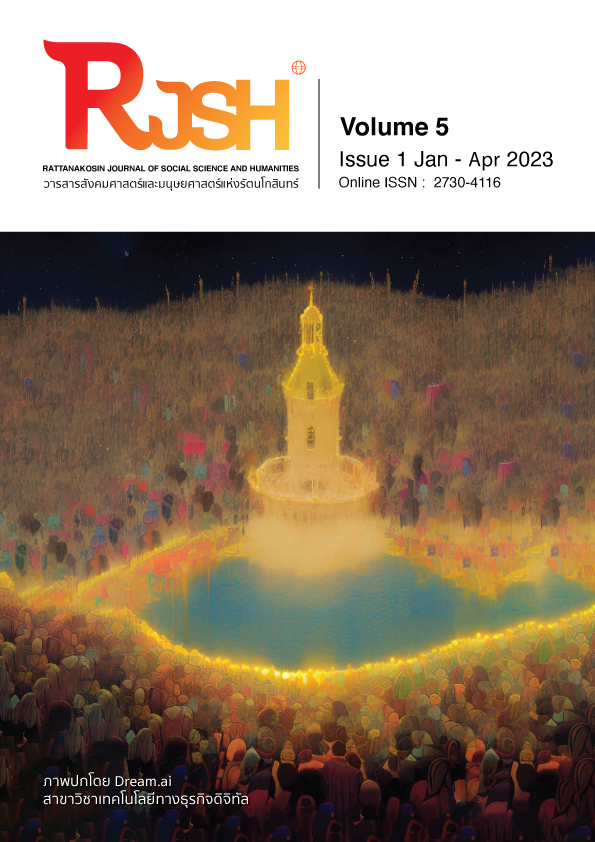Break-Even Point Analysis for Education Management on Curriculum of Rajamangala University of Technology Rattanakosin into Industry 4.0
Main Article Content
Abstract
The purposes of this research are to (1) study the total unit cost of the curriculum according to case studies from different programs, (2) analyze the break-even point of the Faculty of Industry and Technology, synthesize the trends of the total break-even point and put it into practice, (3) identify information for education management of curriculum according to break-even point toward Industry 4.0 by using the calculation methods of net total unit costs, total fixed costs, and total variable costs. The standard techniques were used to calculate, analyze, and synthesize the appropriate break-even point. According to the research results, (1) it was found that the programs with the highest and the lowest percentages of net total unit costs were Information Technology Program (19.55%) and Mass Communication Technology Program (14.05%), respectively, (2) the percentage calculation of the total break-even point of the faculty based on the change of the ratio of total fixed and total variable costs illustrated that the case study ratios were 10%:90%, 15%:85%, and 20%:80% with average student budget was 178 baht, as a result, the total number of students at break-even point was equivalent. It can be observed that before the break-even point (Loss) is reached, the fixed cost increases and the average variable cost decreases, there is a tendency for the number of students at the break-even point to be decreased. On the other hand, after the break-even point (Profit) is reached, the fixed cost increases and the average variable cost decreases. There is a tendency for the number of students at the break-even point to be increased, (3) the Faculty could greatly control well-fixed costs and could to be lead its curriculums namely Production Engineering Technology Program and Mass Communication Technology Program toward the S-Curve Industry group. The total unit cost of the two programs was comparatively lower than other programs within the same academic year.
Article Details

This work is licensed under a Creative Commons Attribution-NonCommercial-NoDerivatives 4.0 International License.
The content within the published articles, including images and tables, is copyrighted by Rajamangala University of Technology Rattanakosin. Any use of the article's content, text, ideas, images, or tables for commercial purposes in various formats requires permission from the journal's editorial board.
Rajamangala University of Technology Rattanakosin permits the use and dissemination of article files under the condition that proper attribution to the journal is provided and the content is not used for commercial purposes.
The opinions and views expressed in the articles are solely those of the respective authors and are not associated with Rajamangala University of Technology Rattanakosin or other faculty members in the university. The authors bear full responsibility for the content of their articles, including any errors, and are responsible for the content and editorial review. The editorial board is not responsible for the content or views expressed in the articles.
References
กุลปวีณ์ สมานทอง, ปฐมพงษ์ ฤกษ์สมผุส, วิชชุดา เทพเดชา, & สุรีวัลย์ เงินพูลทรัพย์. (2563). อุตสาหกรรมไทย 4.0 กับการเตรียมความพร้อมเพื่อพัฒนาหลักสูตรของมหาวิทยาลัย. การประชุมวิชาการร่วมสัมมนานานาชาติ (OREG-2020) (หน้า 1-5). นครนายก: ภูสักธาร รีสอร์ท.
คิม ไชยแสนสุข และสุพรรณณิกา ลือชารัศมี. (2562). หลักเศรษฐศาสตร์ Principles of Economics (แปลและเรียบเรียง). (พิมพ์ครั้งที่ 1). กรุงเทพฯ: บริษัท เซนเกจ เลินนิ่ง อินโด-ไชน่า.
ธัญญลักษณ์ รุ้งแสงจันทร์. (2561). การรับมือกับการเปลี่ยนแปลงในยุค 4.0 ของแรงงานไทย. วารสารสังคมสงเคราะห์ศาสตร์, 26(2), 172-204.
พงศ์วิทย์ วุฒิวิริยะ และคณะ. (2561). การศึกษาต้นทุนต่อหัว จุดคุ้มทุนและงบประมาณตามแผนในการผลิตบัณฑิตมหาวิทยาลัยเทคโนโลยีราชมงคลสุวรรณภูมิ. รายงานการวิจัย, มหาวิทยาลัยเทคโนโลยีราชมงคลสุวรรณภูมิ.
ภัคธนิกา เศวตเมธิกุล. (2560). การวิเคราะห์ต้นทุนต่อหน่วยรายหลักสูตร กรณีศึกษามหาวิทยาลัยเทคโนโลยีราชมงคลธัญบุรี. Integrated Social Science Journal, 4(1), 274-292.
Salvatore, D. (2004). Managerial Economics in a Global Economy (5th ed.). Oxford: Oxford University Press.
Zerres, C., Boamah, K. B., & Essel, R. (2014). Break-Even Analysis. BusinessSumup. bookboon. The eBook company. 19 pages. https://bookboon.com/en/break-even-analysis-ebook.


